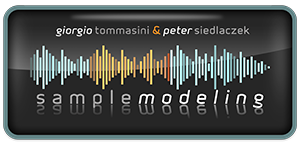Improving solo strings
Been working with the solo strings for a few weeks now. A bug to report, and some comments.
First, the bug.
Using the latest version of Kontact and ProTools on Windows, the solo instruments will often (almost always) get stuck holding the last note when I stop the transport. Yes, I can go into Kontact and use the panic-stop button, but it quickly becomes tedious and annoying.
That aside, I've been quite pleased with the software. I've been able to get pretty decent results with out endless patch changing and fussing. It is, as many have said, "quite playable".
To give it a good test, I used the software to perform a movement from one of my own string quartets. The results are generally pleasing, but there are some scenarios that could be better.
1) Double stops - No matter what I do, they sound drone-y. Usually vibrato solves this type of problem, but you don't hear violinists using vibrato on double stops, even if they're sustained.
2) When the various instruments in the quartet are playing highly contrasting lines, the sound is generally good. When they start forming chords or octave or unisions it begins to sound artificial. Even slathering on the vibrato doesn't help (and that wouldn't be particularly natural anyhow).
3) I'm having trouble getting a sweet sound out of the violin on soft high passages. It tends to sound harsh, as if played by an amateur.
4) The cello is a bit boxy sounding at times.
5) While I can see the sample quality of the solo instruments fitting in well in a larger ensemble context, it's a bit weak for quartet writing. The intimate sounds, like the scrape of the bow against the string on attack, or the residual resonance of the body of the instrument, are lacking. Not necessarily a bad thing, but if you want an intimate string quartet sound, it all comes off as rather sterile. Now to be fair, I've been comparing the sound to what I hear in the Emerson Quartet's recordings of the Beethoven Quartets, so I suppose that's a pretty high bar.
I was wondering. Is there an arena where I could upload the mp3 result and get some advice as to improving the MIDI performance?

Comments
"Sterile", "chords or octave or unisions it begins to sound artificial": Did you try playing it with a Seaboard ?
-Michael
Don't own one. I used my keyboard in conjunction with a TEC breath controller working the volume and vibrato parameters. Then I went through and tweaked the MIDI data where ever things didn't sound right. What I hear happening, in the areas of chords/octaves/unisons, is some sort of odd combinatory effect. If I listen to the parts seperately they sound okay. It's when I bring them all into the mix together that they sound artificial.
I suppose this is due to one or more CCs that are applied to multiple instruments directing their sound more in parallel than appropriate.
I once did a rather complex humanization tool for such purposes. it would need some more tweaking for your exact usage case. It's done in a way propriety to Reaper, but maybe could be made working with other DAWs, as well.
-Michael
I suppose it comes down to the definition of "more in parallel than appropriate". All the parts were played individually, so there's variation in volume shape, vibrato shape and attack already there. For articulations like brief tenuto chords, I don't see quite what one could do to stop the instruments from coallesing into an accordion like sound. BTW, this entire line of reasoning is amusingly ironic, given that live players do all they can to make the group sound as homogenous as possible, and here we are talking about the opposite in order to create realism.
Something that is rather easy to do with quite standards tools and might help, is introducing a delay after each instrument (before any room/reverb) and controlling the delay zime with some humanizing (Midi) signal.
If you send me some audio files, I can give it a try.
Better: if you install Reaper (free trial) I can provide some instructions amd the humanizing generator I did, which is overly complex but fun to use.
As said: there is a possibilíty to use this tool in other DAWs, but I'm not sure about the result.
-Michael
Thanks. I appreciate the offer and may take you up on it, but right now I want to try and understand the best way to manipulate all the various MIDI parameters by hand. That way, even if I decide to use some sort of humanizer, I can understand and be able to evaluate it's results.
nradisch,
we think that the difficulties you mention can be compared to a rehearsal of real musicians: they, as you rightly write, "do all they can to make the group sound as homogeneous as possible". :-) So they practice and perfect their sound... We are pretty sure that when you follow each voice of your score and articulate it as a real player would do, all the side effects you´ve mentioned will disappear. As we know, using the Pitch Bend belongs to one of the most important parameters, following the natural, free intonation of the strings. We have a suspicion: could it be that you are using v. 1.2? If so, the version 1.2, has a bug... PB is only working when activating the pitch bend rescaler in the appropriate menu. We are really sorry about that. Fortunately, this has been fixed and you can replace the instruments downloading the version 1.2b. If this is indeed your case, please follow the update instructions on our News page, and try to apply more free, context-dependent intonation. We think it will help.
Samplemodeling team